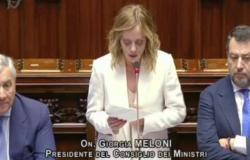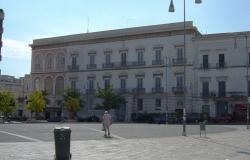
(Sixth Power) – Carpi, 8 June 2024 – An experiment to measure and stimulate the circularity of a sample of companies in the textile and clothing district of Carpi (MO). It was conducted by ART-ER in collaboration with Ergo Srl, a spin-off of the Management Institute of the Sant’Anna School of Advanced Studies in Pisa, in the wake of the permanent regional table of the fashion sector activated by the Emilia-Romagna Region and in which institutions are brought together , businesses and the world of research.
The measurement experience demonstrated a clear intention of companies to experiment with innovative production approaches, which also take into consideration the principles expressed by the European Union Strategy for circular and sustainable textile products. In particular, through the use of recyclable packaging, the reduction of energy consumption, the optimization of production processes for the purpose of reducing material waste and the dissemination of repair services.
The results of the analysis were presented in recent days during the event “The circularity of fashion, Opportunities for available development and growth”promoted by Carpi Fashion System that took place at Palazzo dei Pio in Carpi.
The measurement tool used, which was customized for the Carpi sector and tested on 10 companies, is called Circol Up Tool and was developed together with the Green Laboratory of the Bocconi University of Milan, of which ART-ER is a member. The tool analyzes the degree of circularity of a company based on the phases relating to the life cycle of a product: procurement, design/packaging, production, distribution, use of the product, waste management.
The objective of the analysis was to evaluate the circularity of companies and identify possible improvements to minimize the waste of resources and valorise the waste generated by the processes and products offered to the market. In fact, the tool helps to evaluate performance but also the margins for improvement, through an overall indicator, the so-called “circularity index”, and a target system that identifies the areas in which the company has the best performance and those in which it can invest with greater efficiency and effectiveness.
Some results
Procurement represents the phase with the lowest average performance (average performance 38%). This is often linked to the modest power of control that the companies involved exercise over their suppliers, given their prevalent nature as contractors. Furthermore, the implementation of product traceability systems along the production chain is still limited, highlighting one of the most relevant aspects on which the district could improve, especially through an inter-company collaboration approach. The design phase had an average performance of 49%. In particular, it appears that the companies interviewed design most of their products in order to maximize the durability and repairability of the product (highest indicator with 68%)
The design phase also records positive performances on average with respect to the choice of “circular” packaging for products and with respect to the consideration of distribution in the design phase (although this indicator was judged “not applicable” for half of the companies) and materials in entrance.
On the contrary, companies during the design phase still take little into consideration the eco-design criteria regarding the management of the end of life of the product, particularly problematic if in the presence of non-recyclable mixed yarn
The production phase has an average performance of 50%. In particular, it appears that the companies interviewed implement actions to improve the efficiency of the production process for almost all of their production lines (highest indicator with 83%). Mainly these actions are represented by the purchase of latest generation machinery and equipment which guarantee not only a high quality product, but also the reduction of fabric waste.
THE DISTRICT
The Carpi district includes the municipalities of Carpi, Cavezzo, Concordia, Novi and S. Poxidenio and is characterized by a high specialization in the fashion manufacturing sector. The district, in fact, with its 44% of manufacturing workers employed in the textile and clothing sector in 2019, has a much higher percentage than the national and regional average, which stands at 12.2% and 6.8% respectively , according to what was reported in the 13th Report of the Observatory of the textile and clothing sector in the Carpi district.
The district is historically characterized by a majority component of micro or small-sized businesses, while only a minority share is represented by businesses with more than 50 employees. The 10 companies that participated in the measurement project differ in company size, structure and type of processing. All the companies, except one which only carries out work on its own account, carry out work on behalf of third parties, of which 3 organizations also manage their own brand. The result showed a good level of awareness on the function of the circular economy to improve environmental performance and increase the competitiveness of the district, as well as a marked interest in digital tools and sector innovations to improve the efficiency of the production process and reduce the environmental impacts of the company, as already highlighted by the 13th Report of the Observatory of the textile and clothing sector in the Carpi district and in line with the trends of the sector at European level.
It is clear from the analysis of the context that the companies in the district are called upon, both for the needs expressed by the market and for the requests coming from environmental policies at community and national level, to direct their efforts towards a more sustainable approach. Naturally, companies encounter a certain difficulty in responding to the different needs of the sector: improving circularity performance usually faces barriers of an economic, regulatory and “cultural” nature. Furthermore, a relevant issue, especially for smaller companies, concerns the need to adapt to the client’s requests, thus having little margin of discretion in the choices that determine the impacts of the products along the different phases of the life cycle.
In addition to the choice to undertake innovative approaches such as the use of circular packaging or the reduction of energy consumption, there are also many margins for designing improvement strategies that focus on short/medium term actions or which, especially in terms of collaboration on district scale, can aspire to substantial impacts on the circularity of companies and the district. During the project, some ideas were provided that can serve as a stimulus to undertake a shared reflection within the largest possible number of companies.
According to the study, the circularity of companies can be favored by three factors: being inserted in a district, a characteristic that can facilitate the development of actions according to common logics and activate economies of scale in the implementation of improvement paths; the availability of third-party bodies (in this case ARTER), which facilitate assisted compilation of the tool; the financing opportunities that the Emilia-Romagna Region makes available through a series of tenders, aimed at supporting innovation in the supply chain (PR FESR 2021-2027 tender for experimental research and development projects), supporting the development of energy communities renewables (PR FESR call 2021-2027 – Renewable Energy Communities), or to promote the circular economy.





